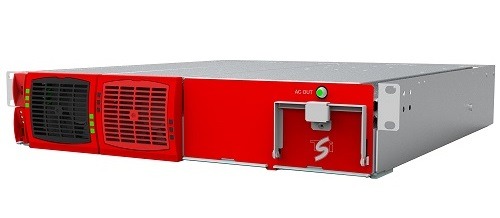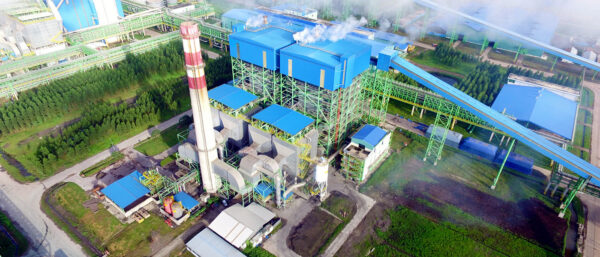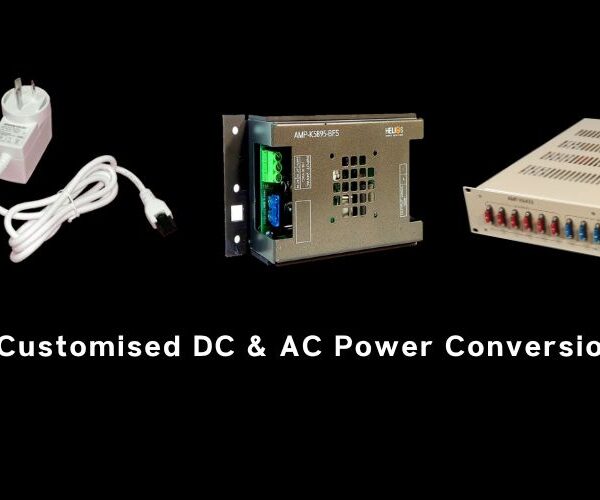Inverters play a vital role within power stations, substations and other utilities, helping to protect and control key equipment.One of the most common type of inverters we get asked about are 110VDC to 230VAC rack mounted inverters – also known as a DC-AC converter*. These are often used as standalone inverters to work in conjunction with a 110VDC power system to back up AC power critical loads for:
- Workstations
- CCTV system
- Security system
- Critical instrumentation equipment (Specially for Power Stations)
- Server room equipment
- Control systems in renewables (solar installations)
8 Key Features to Consider in a New Inverter
1. What Inverter Capacity Do you Need?
There is a wide range of industrial inverters available, and each is designed for a specific purpose. Choosing an inverter with the right capacity for your application can save you budget and physical space (lower capacity inverters tend to be more compact).Many applications like a workstation or CCTV system have low to medium power requirements, and a standalone 5kVA inverter is normally ideal. If you have larger needs, look at scalable solutions like the TSI Bravo DC/AC modular inverters 110VDC/230VAC. These provide modularity from 2.5 kVA up to 80 kVA.These have the capability to be sized and designed to handle inductive loads like actuators, motorized valves (instrumentation equipment in some power stations), air-conditioning, and so on. They can be indispensable in critical process control with pre-determined levels of redundancy that allow you to lose a controller or modules without losing output.

2. What Input Voltage Do you Require?
Utility transmission, distribution and power stations commonly use 110VDC and 125VDC battery banks to backup equipment if the mains fail. So you’ll likely be looking for an inverter that covers this range. At the same time, you might want to consider that some communication applications like the microwave network or SCADA systems might only need 48VDC or 24VDC. Why does this matter? Because you may find it wise to choose an 110VDC/230VAC inverter from a product range that covers all your requirements. Within the Helios TSI Bravo ST range, while the most popular inverter is the ST110/230 and it has a wide input voltage range from 90-160VDC, you also have the option of the:- ST24/230 covers 19-35VDC
- ST48/230 covers 40-60VDC
- ST220/230 covers 170-300VDC

3. What Are The Power Sources?
Many inverters can only handle DC power inputs. If your inverter uses TSI technology, it will be able to manage both AC and DC power inputs. With dual inputs, you can power critical loads off AC mains, switch to a DC power supply if the mains fail, and then switch back to AC later. That flexibility is why TSI technology is the gold standard for inverters.


4. What are the Physical Characteristics of the Inverter?
The physical dimensions of an inverter will also help you to whittle down your shortlist. We recommend you look for a high-density, compact inverter that’s rack-mounted, modular and hot-swappable. Rack-mounted inverters take up less space and are easier to install and maintain. Being modular and hot-swappable makes repairs faster and cheaper if the inverter fails (see No. 6 What happens if an inverter fails). In our experience, DC to AC Converters (Inverters) are usually mounted within one of the communications racks or an independent AC Distribution Cabinet.
5. What is The Transfer Performance?
This is the switching time between DC input and AC input. For example, high-quality inverters like the Helios ST TSI Bravo Inverter 5kVA 110VDC/230VAC have a zero-transfer time. So, if the AC mains goes out of the tolerance range or completely fails, the converter will switch seamlessly to the DC power system without any drop or delay. In the Bravo ST, this is called back-up mode and it all happens in 0ms.This zero-transfer time is critical for equipment that might misfunction if the input voltage is out of the tolerance range for even a split second.6. Does It Have Remote Control Capabilities?
Being able to monitor the health of your inverter is also essential. A modern inverter should provide an easy-to-use communication feature. For example, a T2S Remote monitoring interface that allows you to do online diagnostic and system integration through a Modbus TCP.7. What Happens if The Inverter Fails?
When an inverter fails, you’ll normally require a maintenance bypass to replace the faulty inverter – and that’s when you’ll want a solution that is modular, hot swappable and has an internal automatic bypass. The Bravo ST is designed this way. So if you have an N configuration with no redundancy, when one module fails, the Bravo ST will use its automatic bypass to switch to AC. You can then do a hot swap replacement without shutting down the AC input.For an N+1 configuration with two 2.5 kVA modules, the second module will continue to feed the load while you hot swap the first one. If the second module fails, the automatic bypass will kick in just like with an N configuration.
8. What Service Support Do Suppliers Provide?
Even the best inverters can fail, so consider what service levels you expect to back it up before making any purchase decision.- Does your supplier have the in-house expertise available?
- Will their technical experts provide after sales support?
- Do they operate a reliable supply chain for replacements?
- Can they scale or customise solutions for you in the future






















